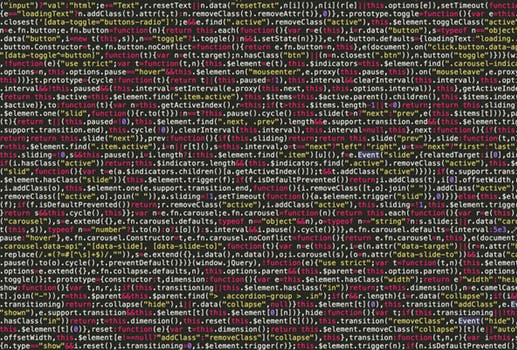TheDeveloperBlog.com
C-Sharp | Java | Python | Swift | GO | WPF | Ruby | Scala | F# | JavaScript | SQL | PHP | Angular | HTML
Golang Convert Slice to String: int, string Slices
Convert slices to strings. Transform a string slice into a string and an int slice into a string.Convert slice, string. A slice contains string data. It contains int data. With strings.Join we can convert a string slice to a string.Slice
For slices with ints, or other types of elements, we can first convert a slice into a string slice. A method like strconv.Itoa can help.
String slice. Here we convert a string slice into a string. Our string slice has three elements. More can be added with append().
Strings.Join: We import the "strings" module. With strings.Join, we combine all elements of a string slice into a string.
Tip: The second argument to strings.Join is the delimiter. For no delimiter, please use an empty string literal.
Golang program that converts string slice to string
package main
import (
"fmt"
"strings"
)
func main() {
values := []string{"one", "two", "three"}
// Convert string slice to string.
// ... Has comma in between strings.
result1 := strings.Join(values, ",")
fmt.Println(result1)
// ... Use no separator.
result2 := strings.Join(values, "")
fmt.Println(result2)
}
Output
one,two,three
onetwothree
Int slice to string. Here we convert an int slice into a string. First we create a string slice from the data in the int slice. We use a for-range loop for this.For
Strconv.Itoa: This converts an int into a string. We then place these strings (text) into the valuesText slice.
Finally: We convert our string slice into a string with the strings.Join method.
Golang program that converts int slice to string
package main
import (
"fmt"
"strconv"
"strings"
)
func main() {
// The int slice we are converting to a string.
values := []int{10, 200, 3000}
valuesText := []string{}
// Create a string slice using strconv.Itoa.
// ... Append strings to it.
for i := range values {
number := values[i]
text := strconv.Itoa(number)
valuesText = append(valuesText, text)
}
// Join our string slice.
result := strings.Join(valuesText, "+")
fmt.Println(result)
}
Output
10+200+3000
Append runes. In Go we have another option for building up a string. We can append runes to a rune slice based on our data. Then we can convert the rune slice into a string.Strings: Runes
A summary. With strings.Join we convert a string slice into a string. Sometimes we can convert another type of data, like an int slice, into a string slice before using Join.
© TheDeveloperBlog.com
The Dev Codes
Related Links:
- Golang strconv, Convert Int to String
- Golang Odd and Even Numbers
- Golang Recover Built In: Handle Errors, Panics
- Learn Go Language Tutorial
- Golang html template Example
- Golang http.Get Examples: Download Web Pages
- Golang container list Example (Linked List)
- Golang base64 Encoding Example: EncodeToString
- Golang os exec Examples: Command Start and Run
- Golang String Between, Before and After
- Golang os.Remove: Delete All Files in Directory
- Golang First Words in String
- Golang flag Examples
- Golang Regexp Find Examples: FindAllString
- Golang Regexp Examples: MatchString, MustCompile
- Golang Index, LastIndex: strings Funcs
- Golang Compress GZIP Examples
- Golang Interface Example
- Golang 2D Slices and Arrays
- Golang Sscan, Sscanf Examples (fmt)
- Top 41 Go Programming (Golang) Interview Questions (2021)
- Golang Padding String Example (Right or Left Align)
- Golang Equal String, EqualFold (If Strings Are the Same)
- Golang map Examples
- Golang Map With String Slice Values
- Golang Array Examples
- Golang Remove Duplicates From Slice
- Golang If, Else Statements
- Golang ParseInt Examples: Convert String to Int
- Golang Strings
- Golang strings.Map func
- Golang bufio.ScanBytes, NewScanner (Read Bytes in File)
- Golang Built In Functions
- Golang bytes.Buffer Examples (WriteString, Fprintf)
- Golang Bytes: Slices and Methods
- Golang Caesar Cipher Method
- Golang Chan: Channels, Make Examples
- Golang Math Module: math.Abs, Pow
- Golang Reverse String
- Golang Struct Examples: Types and Pointers
- Golang path and filepath Examples (Base, Dir)
- Golang Substring Examples (Rune Slices)
- Golang Suffixarray Examples: New, Lookup Benchmark
- Golang switch Examples
- Golang Convert Map to Slice
- Golang Convert Slice to String: int, string Slices
- Golang Const, Var Examples: Iota
- Golang ROT13 Method
- Golang strings.Contains and ContainsAny
- Golang rand, crypto: Random Number Generators
- Golang String Literal Examples (Repeat Method)
- Golang ToLower, ToUpper String Examples
- Golang Trim, TrimSpace and TrimFunc Examples
- Golang Join Examples (strings.Join)
- Golang Len (String Length)
- Golang Convert String to Rune Slice (append)
- Golang JSON Example: Marshal, Unmarshal
- Golang Replace String Examples: Replacer, NewReplacer
- Golang nil (Cannot Use nil as Type)
- Golang Slice Examples
- Golang ListenAndServe Examples (HandleFunc)
- Golang Fibonacci Sequence Example
- Golang Time: Now, Parse and Duration
- Golang bits, OnesCount (Get Bitcount From Int)
- Golang Fprint, Fprintf and Fprintln Examples (fmt)
- Golang Func Examples
- Golang csv Examples
- Golang Fields and FieldsFunc
- Golang unicode.IsSpace (If Char Is Whitespace)
- Golang fmt.Println Examples
- Golang for Loop Examples: Foreach and While
- Golang ioutil.WriteFile, os.Create (Write File to Disk)
- Golang File Handling
- Golang range: Slice, String and Map
- Golang Readdir Example (Get All Files in Directory)
- Golang Sort Slice: Len, Less, Swap in Interface
- Golang Get Lines in File (String Slice)
- Golang Split Examples (SplitAfter, SplitN)